| V. large, bright star (planet?) in SE aspect of night sky on Aug 11th & 12th 18:13 - Aug 15 with 8958 views | Ryorry |
Anyone know what it was please? Seemed too big & bright to be Venus. Just after midnight, about 90 degrees up from horizon. The top right quadrant seemed to be missing, as though someone had gobbled up that portion of pie! |  |
| |  |
| V. large, bright star (planet?) in SE aspect of night sky on Aug 11th & 12th on 12:56 - Aug 16 with 2072 views | ArnoldMoorhen |
| V. large, bright star (planet?) in SE aspect of night sky on Aug 11th & 12th on 08:57 - Aug 16 by StokieBlue |
Not quite, those lens will each give you a different magnification. Stacking is where you take a video of the object (in this case using a phone camera and whatever lens gives you the magnification you want) and then you process that video to extract the best frames and then stack them on top of each other to create a cleaner image.
It's also how the pictures you see from the JWT and Hubble are constructed but obviously at a far simpler level.
SB |
Ah, thanks for the clarification. |  | |  |
| V. large, bright star (planet?) in SE aspect of night sky on Aug 11th & 12th on 13:43 - Aug 19 with 2038 views | StokieBlue |
| V. large, bright star (planet?) in SE aspect of night sky on Aug 11th & 12th on 23:14 - Aug 15 by StokieBlue |
Both Jupiter and Saturn are currently visible in the SE sky, Saturn rising earlier and to the right of the moon whilst Jupiter rises later to the left of the moon (although it catches up through the night).
I managed to take an OK image of Saturn with my phone video and some stacking the other night even in my light polluted skies, hopefully will do something better with a better camera than my old phone.

SB |
First go at Jupiter last night, I need a lot more practice with the whole process but was fairly happy with my first attempt.

Anyone else do any astrophotography?
SB |  | |  |
| V. large, bright star (planet?) in SE aspect of night sky on Aug 11th & 12th on 13:53 - Aug 19 with 2021 views | Ryorry |
| V. large, bright star (planet?) in SE aspect of night sky on Aug 11th & 12th on 13:43 - Aug 19 by StokieBlue |
First go at Jupiter last night, I need a lot more practice with the whole process but was fairly happy with my first attempt.

Anyone else do any astrophotography?
SB |
Nice one again ðŸ‘
Any idea why the top right quadrant appears missing to the naked eye? Seemed more pronounced than ever last night. The clear sky wasn't enough compensation for rain clouds disappearing after dropping barely enough rain to even dampen the ground tho. |  |
|  |
| V. large, bright star (planet?) in SE aspect of night sky on Aug 11th & 12th on 10:24 - Aug 20 with 1981 views | StokieBlue |
| V. large, bright star (planet?) in SE aspect of night sky on Aug 11th & 12th on 23:14 - Aug 15 by StokieBlue |
Both Jupiter and Saturn are currently visible in the SE sky, Saturn rising earlier and to the right of the moon whilst Jupiter rises later to the left of the moon (although it catches up through the night).
I managed to take an OK image of Saturn with my phone video and some stacking the other night even in my light polluted skies, hopefully will do something better with a better camera than my old phone.

SB |
Improving:

Won't bump this anymore, perhaps not the right forum for astrophotography :).
SB |  | |  |
| V. large, bright star (planet?) in SE aspect of night sky on Aug 11th & 12th on 11:41 - Aug 20 with 1941 views | Lord_Lucan |
| V. large, bright star (planet?) in SE aspect of night sky on Aug 11th & 12th on 21:26 - Aug 15 by EdwardStone |
I was thinking of "mansplaining" that 90 degrees would be directly above your head
But I felt it would be rude, so I didn't .
General rule in Life... if it is low in the sky and very bright, then it is a planet rather than a star |
I know nothing about heavenly bodies but did just see this when I was looking at the Twinners tweet
https://mobile.twitter.com/themoonpics_/status/1560807624333041666/photo/1 |  |
|  |
| V. large, bright star (planet?) in SE aspect of night sky on Aug 11th & 12th on 11:48 - Aug 20 with 1953 views | Meadowlark |
| V. large, bright star (planet?) in SE aspect of night sky on Aug 11th & 12th on 18:20 - Aug 15 by NewcyBlue |
This time of year Jupiter is visible in the SE quadrant.
Probably next brightest celestial body in that area will be Alpheratz which is the upper left star of the square of Pegasus. |
"This time of year?"
What? Every year?? | 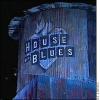 | |  |
| V. large, bright star (planet?) in SE aspect of night sky on Aug 11th & 12th on 08:15 - Aug 23 with 1882 views | NthQldITFC |
| V. large, bright star (planet?) in SE aspect of night sky on Aug 11th & 12th on 10:24 - Aug 20 by StokieBlue |
Improving:

Won't bump this anymore, perhaps not the right forum for astrophotography :).
SB |
JWST? Jupiter With Stokie's Telescope?
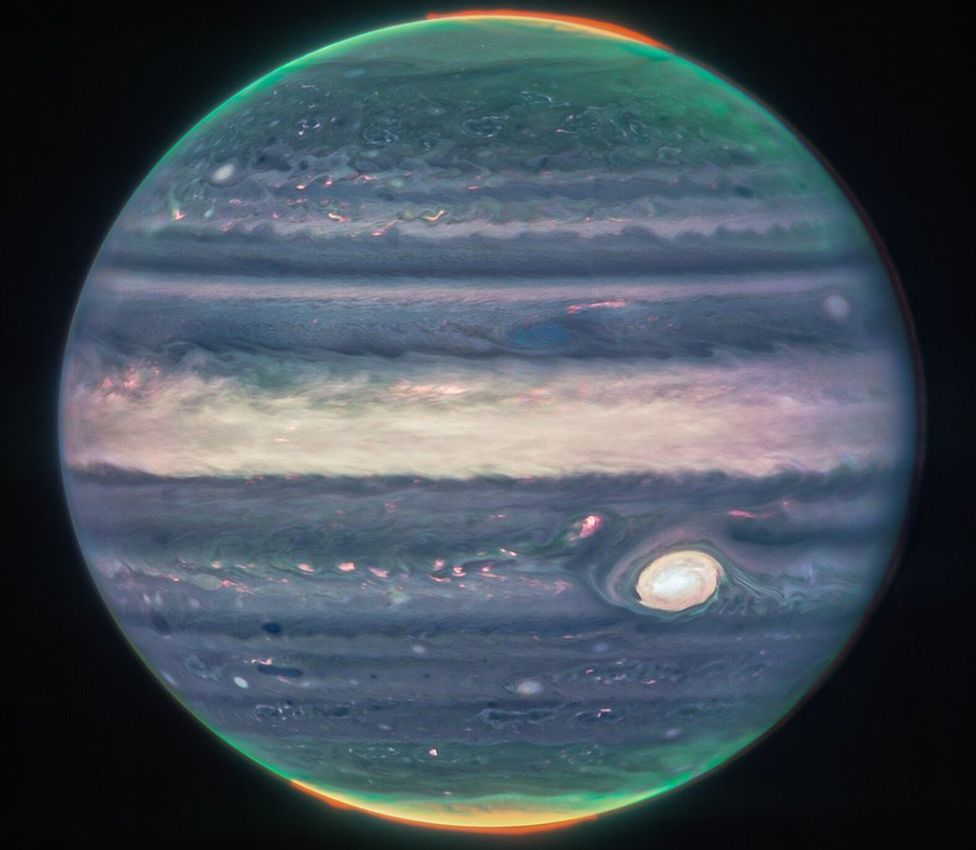
https://www.bbc.co.uk/news/science-environment-62641866 |  |
|  |
| V. large, bright star (planet?) in SE aspect of night sky on Aug 11th & 12th on 08:35 - Aug 23 with 1869 views | BarcaBlue |
| V. large, bright star (planet?) in SE aspect of night sky on Aug 11th & 12th on 10:24 - Aug 20 by StokieBlue |
Improving:

Won't bump this anymore, perhaps not the right forum for astrophotography :).
SB |
Last night looking out at the night sky I could just make out the milky way. This was in a village in the Pyrenees with dark sky friendly street lighting. If I went 100 metres from the village it might be a tad clearer but how do people get those clear defined shots of the milky way?
I have a Canon 400mm lens on a Canon 250d. Main use is wildlife photography on hikes in the mountains. I've never used it for astrophotography. | 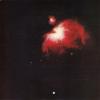 | |  |
Login to get fewer ads
| V. large, bright star (planet?) in SE aspect of night sky on Aug 11th & 12th on 08:49 - Aug 23 with 1862 views | ronnyd |
Nice to see that this topic has gone into Interstellar Overdrive.  |  | |  |
| V. large, bright star (planet?) in SE aspect of night sky on Aug 11th & 12th on 09:05 - Aug 23 with 1853 views | StokieBlue |

I saw that earlier, a great image where they have skewed the colours to bring out the details.
I did have another go at Jupiter the other day, obviously not ideal conditions here but got a nice one of Jupiter and two of the Galilean moons (bottom left and top right of the image, can see them a bit easier if you click on the image or up the brightness).

SB |  | |  |
| V. large, bright star (planet?) in SE aspect of night sky on Aug 11th & 12th on 09:07 - Aug 23 with 1852 views | StokieBlue |
| V. large, bright star (planet?) in SE aspect of night sky on Aug 11th & 12th on 08:35 - Aug 23 by BarcaBlue |
Last night looking out at the night sky I could just make out the milky way. This was in a village in the Pyrenees with dark sky friendly street lighting. If I went 100 metres from the village it might be a tad clearer but how do people get those clear defined shots of the milky way?
I have a Canon 400mm lens on a Canon 250d. Main use is wildlife photography on hikes in the mountains. I've never used it for astrophotography. |
It's always nice if you can see the band of the Milky Way, there is just something about it which is wonderful.
For those shots I think they go out to a proper darks skies site (like Kielder Forest) and then do very long exposures to collect as much light as possible but not to get star trails.
Then obviously some touching up in Photoshop.
SB |  | |  |
| V. large, bright star (planet?) in SE aspect of night sky on Aug 11th & 12th on 00:08 - Sep 27 with 1640 views | Ryorry |
[Post edited 27 Sep 2022 0:12]
|  |
|  |
| V. large, bright star (planet?) in SE aspect of night sky on Aug 11th & 12th on 17:08 - Sep 27 with 1560 views | Charlie_pl_baxter |
| V. large, bright star (planet?) in SE aspect of night sky on Aug 11th & 12th on 10:24 - Aug 20 by StokieBlue |
Improving:

Won't bump this anymore, perhaps not the right forum for astrophotography :).
SB |
Great shot Stokie, love a bit of astrophtography! Not quite worked out how to do it with my fairly limited telescope but very much enjoyed the Jupiter opposition. | 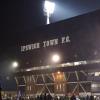 |
|  |
| V. large, bright star (planet?) in SE aspect of night sky on Aug 11th & 12th on 17:41 - Sep 27 with 1554 views | StokieBlue |
| V. large, bright star (planet?) in SE aspect of night sky on Aug 11th & 12th on 17:08 - Sep 27 by Charlie_pl_baxter |
Great shot Stokie, love a bit of astrophtography! Not quite worked out how to do it with my fairly limited telescope but very much enjoyed the Jupiter opposition. |
That's most kind.
I've taken a few good ones of Jupiter as given my viewing conditions it cuts through the pollution the best.
I started off with just my phone on a single image, then attempted to stack video frames from my phone (the first Saturn picture) and the latest ones are using a dedicated astrophotography camera and stacking the resulting video.
In a month or two I'll hopefully have a go at something like the Orion Nebula, it's not visible at the moment.
SB |  | |  |
| V. large, bright star (planet?) in SE aspect of night sky on Aug 11th & 12th on 22:14 - Sep 27 with 1512 views | Swansea_Blue |
Just managed to grab this in a gap between the clouds on my Nokia 3310. It’s not my best as I was juggling a Diamond White and a kebab, but it’s passable 

Stunning picture. I’m amazed at what amateur star gazers can now do on a relatively modest budget. The actual credits for this are:
“The Andromeda Galaxy, captured by Tom Howard with a Nikon D7000 DSLR camera, TS-Optics 65mm quadruplet refractor and Sky-Watcher EQ6 mount”.
You can pick the gear up for about £2k (camera used from £200, short telescope lens £500, tracking tripod ~£1,300). Considering the quality of the pictures you can get that’s pretty good value. A lot cheaper than launching a Hubble telescope anyway. |  |
|  |
| V. large, bright star (planet?) in SE aspect of night sky on Aug 11th & 12th on 22:23 - Sep 27 with 1506 views | Swansea_Blue |
| V. large, bright star (planet?) in SE aspect of night sky on Aug 11th & 12th on 09:05 - Aug 23 by StokieBlue |

I saw that earlier, a great image where they have skewed the colours to bring out the details.
I did have another go at Jupiter the other day, obviously not ideal conditions here but got a nice one of Jupiter and two of the Galilean moons (bottom left and top right of the image, can see them a bit easier if you click on the image or up the brightness).

SB |
That’s cool. We were looking at Jupiter on the August bank holiday when we had a family gathering at the in-laws in North Pembs (no light pollution at all, except from a fire my pyromaniac BIL got going). When you look at it with a pair of binoculars the moons were so much brighter and appeared bigger than what you’re picking up there.i suppose you’re seeing past the reflective glare, as it were. The bins weren’t good enough to pick out Jupiter’s surface structures either. Still cool to see and the kids loved it (eldest is getting a bit of an astronomy bug now he’s doing more physics as part of his GCSEs). |  |
|  |
| V. large, bright star (planet?) in SE aspect of night sky on Aug 11th & 12th on 02:00 - Sep 28 with 1473 views | jeera |
| V. large, bright star (planet?) in SE aspect of night sky on Aug 11th & 12th on 22:23 - Sep 27 by Swansea_Blue |
That’s cool. We were looking at Jupiter on the August bank holiday when we had a family gathering at the in-laws in North Pembs (no light pollution at all, except from a fire my pyromaniac BIL got going). When you look at it with a pair of binoculars the moons were so much brighter and appeared bigger than what you’re picking up there.i suppose you’re seeing past the reflective glare, as it were. The bins weren’t good enough to pick out Jupiter’s surface structures either. Still cool to see and the kids loved it (eldest is getting a bit of an astronomy bug now he’s doing more physics as part of his GCSEs). |
"That's cool". It's given me the hump.
I've just been outside with some binoculars and all I got was a little white dot turned into a bigger white dot.
I shall need to invest in something better at some point. | 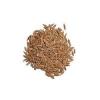 |
|  |
| V. large, bright star (planet?) in SE aspect of night sky on Aug 11th & 12th on 09:19 - Sep 28 with 1423 views | StokieBlue |
| V. large, bright star (planet?) in SE aspect of night sky on Aug 11th & 12th on 22:14 - Sep 27 by Swansea_Blue |
Just managed to grab this in a gap between the clouds on my Nokia 3310. It’s not my best as I was juggling a Diamond White and a kebab, but it’s passable 

Stunning picture. I’m amazed at what amateur star gazers can now do on a relatively modest budget. The actual credits for this are:
“The Andromeda Galaxy, captured by Tom Howard with a Nikon D7000 DSLR camera, TS-Optics 65mm quadruplet refractor and Sky-Watcher EQ6 mount”.
You can pick the gear up for about £2k (camera used from £200, short telescope lens £500, tracking tripod ~£1,300). Considering the quality of the pictures you can get that’s pretty good value. A lot cheaper than launching a Hubble telescope anyway. |
Amazing picture.
The key component there is a tracking tripod, for DSO the more photons you can collect the better the end result so being able to track and video or expose for hours generates better images.
You can manage the planets without a tracking tripod although it does help (I've got a fairly basic Go-To one).
SB |  | |  |
| V. large, bright star (planet?) in SE aspect of night sky on Aug 11th & 12th on 09:31 - Sep 28 with 1419 views | StokieBlue |
| V. large, bright star (planet?) in SE aspect of night sky on Aug 11th & 12th on 22:23 - Sep 27 by Swansea_Blue |
That’s cool. We were looking at Jupiter on the August bank holiday when we had a family gathering at the in-laws in North Pembs (no light pollution at all, except from a fire my pyromaniac BIL got going). When you look at it with a pair of binoculars the moons were so much brighter and appeared bigger than what you’re picking up there.i suppose you’re seeing past the reflective glare, as it were. The bins weren’t good enough to pick out Jupiter’s surface structures either. Still cool to see and the kids loved it (eldest is getting a bit of an astronomy bug now he’s doing more physics as part of his GCSEs). |
You're right, this image is using very short (5ms) exposures and is zoomed in to ensure that Jupiter isn't just a bright blob, if you use binoculars or just normal exposures or the eyepiece unzoomed then you'll get one large blob and four smaller ones in a line across it. The processing also tends to focus on the planet and thus the moons are a bit neglected and often aren't in the final image at all.
You likely saw something like this (taken a few months ago in Lanzarote with a 60mm Mak and my phone):

SB |  | |  |
| V. large, bright star (planet?) in SE aspect of night sky on Aug 11th & 12th on 12:25 - Oct 8 with 1269 views | Charlie_pl_baxter |
How are you rigging up your phone SB? I'm having to manually aim down the lens! |  |
|  |
| V. large, bright star (planet?) in SE aspect of night sky on Aug 11th & 12th on 12:31 - Oct 8 with 1264 views | jeera |
| V. large, bright star (planet?) in SE aspect of night sky on Aug 11th & 12th on 12:25 - Oct 8 by Charlie_pl_baxter |
How are you rigging up your phone SB? I'm having to manually aim down the lens! |

That's the sort of thing I would do but never admit it! |  |
|  |
| V. large, bright star (planet?) in SE aspect of night sky on Aug 11th & 12th on 13:33 - Oct 8 with 1242 views | StokieBlue |
| V. large, bright star (planet?) in SE aspect of night sky on Aug 11th & 12th on 12:25 - Oct 8 by Charlie_pl_baxter |
How are you rigging up your phone SB? I'm having to manually aim down the lens! |
I've also used the "manually aim down the lens" technique to get some shots although it's sometimes quite tricky.
You can get dedicated phone holders, I've got this one but cheaper ones are available and work fine, you just adjust the width and height rather than have something which goes directly on the eyepiece end like this.
https://www.ebay.co.uk/itm/133166994645

If you have a DSLR then you can also get an adapter for those to attach to the scope and they are excellent for longer exposure shots (I don't have one).
So the last pictures of the Moon, Jupiter and Saturn were taken using my astrocamera and then stacking the video frames:

However you certainly can use a phone to get some excellent shots, especially of the Moon where a single shot is fine and you don't need to process. The first shot of Saturn I posted on this thread was a video taken on a my phone and then stacked (I think it's pretty decent given it was with my phone).
SB |  | |  |
| V. large, bright star (planet?) in SE aspect of night sky on Aug 11th & 12th on 18:41 - Oct 8 with 1199 views | Charlie_pl_baxter |
| V. large, bright star (planet?) in SE aspect of night sky on Aug 11th & 12th on 13:33 - Oct 8 by StokieBlue |
I've also used the "manually aim down the lens" technique to get some shots although it's sometimes quite tricky.
You can get dedicated phone holders, I've got this one but cheaper ones are available and work fine, you just adjust the width and height rather than have something which goes directly on the eyepiece end like this.
https://www.ebay.co.uk/itm/133166994645

If you have a DSLR then you can also get an adapter for those to attach to the scope and they are excellent for longer exposure shots (I don't have one).
So the last pictures of the Moon, Jupiter and Saturn were taken using my astrocamera and then stacking the video frames:

However you certainly can use a phone to get some excellent shots, especially of the Moon where a single shot is fine and you don't need to process. The first shot of Saturn I posted on this thread was a video taken on a my phone and then stacked (I think it's pretty decent given it was with my phone).
SB |
Do you use a tracking motor or adjust by hand? I've got an equatorial mount but unfortunately the axle for the horary axis got bent so I can't attach one. |  |
|  |
| |